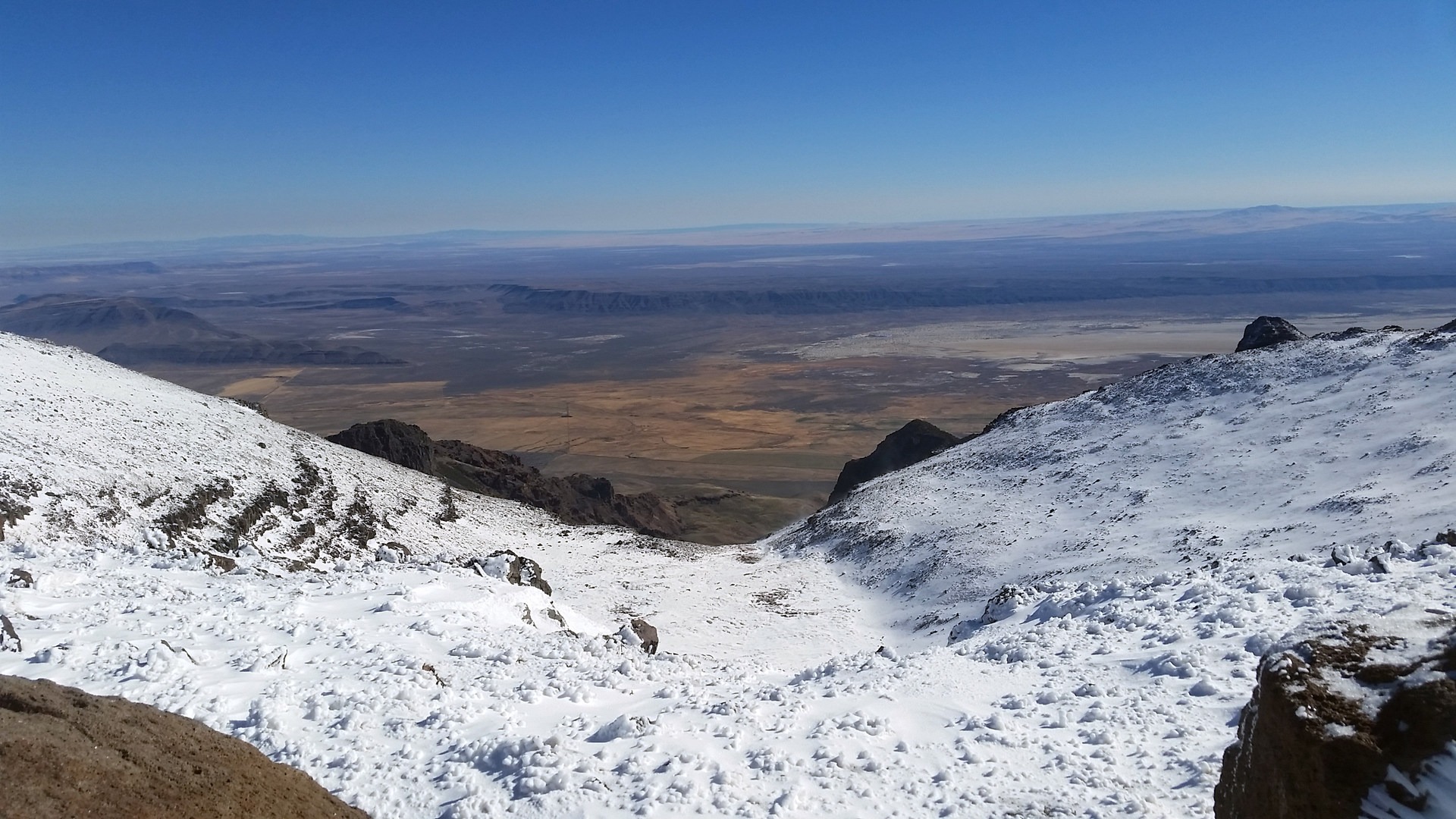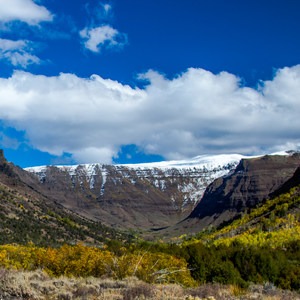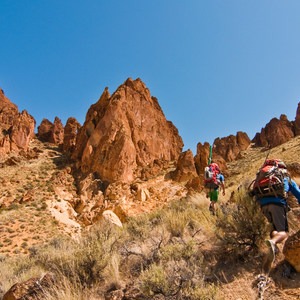After huffing up the 2,000-foot climb out of Big Indian Gorge, my sweat-dampened shirt quickly chilled in the sharp November wind. I was just days from finishing my Oregon Desert Trail section hike with the final 65-mile stretch up and over the monolithic Steens Mountain in Eastern Oregon.
I surveyed the miles of alkaline playa 5,000 feet below Steens summit and the vast expanse of public land stretching far into the horizon. That early November morning was just days away from an election that would upset the nation and jeopardize the future of the very land below my feet.
In the weeks that followed, one thing became clear: I needed to act to protect what I love. The question became: How could I advocate for public lands and have a real impact?
I am fortunate enough to work for a conservation organization, the Oregon Natural Desert Association, which has been working for 30 years to protect, defend, and restore high desert landscapes in Eastern Oregon. But after multiple conversations with friends who don’t directly work in the conservation field, I realized they, too, wanted guidance on how to be effective in advocating for the future of our public lands. So I surveyed a few of my colleagues and came up with these action points:
Five Tips on How YOU Can Advocate for Public Lands Protection
1. Focus on public lands close to home
One of the best ways to participate in the public lands debate is to become educated about some of your favorite places. Is your go-to hike on public land? If so, which agency manages it, and does it currently have any protections or designations? We often form personal connections with our favorite places, and those connections can be powerful when a place you love is at risk. Visit your Forest Service, BLM, or State Parks office. Learn more about how they steward your favorite places, ask how you can participate in trail maintenance, or in any upcoming planning processes.
2. Join a local conservation organization
Most communities have a variety of nonprofit conservation organizations that work to protect important landscapes and watersheds. Each of these groups may have a specific focus, whether it is sustainability, climate change, river health, or supporting the stewardship of a specific wilderness area. These organizations give a powerful voice to important local and national public land issues and rely on their members to help support advocacy for restoration activities in the places we all cherish. Consider becoming a member of one conservation organization in your area. Start volunteering, or join them on a hike or stewardship trip. Your donation, membership, volunteer time, or voice can make a difference.
3. Get to know your senators and representatives
Your senators and representatives represent you on the state and national level, so it’s important to let them know where you stand on public lands issues. There is a lot of debate these days about the most effective ways to reach out to your elected officials, but any action is better than no action. Call their offices, write postcards, attend town hall meetings…and make it personal. You don’t have to be an expert on public lands to have a powerful pull. It can be very meaningful for our officials to hear from everyday people who care about public lands, so share your stories, share your concerns, and if they have been supportive of keeping public lands public, thank them!
4. Hold small gatherings with friends/family
Since so many people take access to public lands for granted, we need as many folks as possible to simply be out talking with their friends, neighbors, and family about why public lands are important. Invite some friends over, and over dinner or beers talk about a few of the current threats. One of the main issues you may want to discuss involves proposals to hand over American public lands to the states. Because most state governments can’t afford to manage millions of acres of land, a likely scenario would result in raising taxes or selling our land to the highest bidder in order to pay for costs like firefighting and management. Come up with a list of your legislators’ addresses, and then have everyone write a few postcards and make a night of it! (Find more here: https://www.congress.gov/state..., https://www.congress.gov/ -search legislation).
5. Vote
Start local. City, county, state and even school boards have elections between the presidential election years, and we can build a strong voice from the bottom up. Do some research and find out where your local candidates stand on public lands issues. Then make your voice heard on Election Day.
A version of this article first appeared on the Oboz blog and is used with permission.
For the last 30 years the Oregon Natural Desert Association (ONDA) and supporters have given a voice to the conservation needs of eastern Oregon’s high desert. Now a respected state and national leader in the public lands conversation, ONDA and its members remain steadfast in their commitment to protect, defend, and restore Oregon's high desert.
While ONDA takes great pride in accomplishments like protecting over 200,000 acres of wilderness in eastern Oregon, another 8 million acres of high desert lands have wilderness qualities but are yet to be protected. Through a diligent focus on priority areas and backed by thousands of supporters, ONDA is a powerful voice for conservation of Oregon’s desert wildlands.





Comments
Sign In and share them.